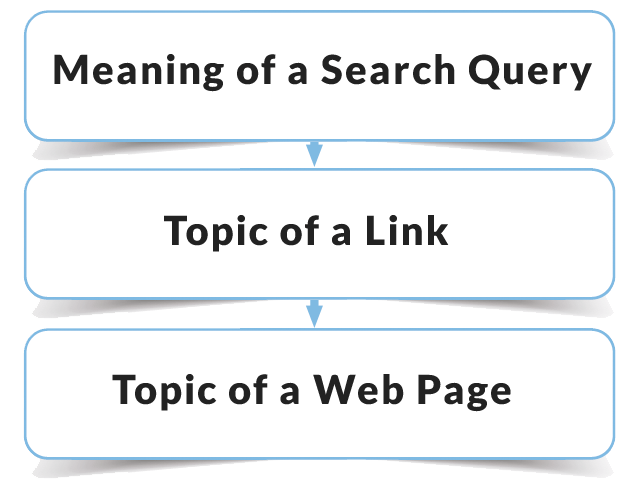NEWS
Coordinate Links and Content for Success

For some sites, the process of encouraging links can improve when it’s done together with the content side of a business. I hesitate to call it link building because it’s not really building links in the way it’s commonly thought of.
The reason why content creation and link acquisition should coordinate with each other is because of how tightly Google matches the context between the page where a link is created and the page that the link is pointing to and the search query a searcher is making.
I believe those three matching contexts helps a page rank better.
A link graph is the map of the web, which can be organized by topic and/or niche. The ideal link, in my opinion is from a site that occupies a topically relevant part of the link graph. With enough links, a single page might be able to occupy a topically relevant position in that kind of link graph.
Of course, the page on which the link originates has to be on a topically relevant. And that should ideally exist on a site that is topically relevant. And that site should ideally belong to a topically relevant branch of the link graph.
The importance of the context of a link and and the context of the linked page and how it matches to the intent of a user making the query is important because it may predict a more successful outcome.
For example, during the course of link building I’ve noticed that certain topics are trending and that sites are beginning to link to content that is about that topic.
That’s when I turn to the content side and ask for content about a certain topic. I know that if we produce content on a certain topic we have a higher likelihood of obtaining links for content about that topic.
As someone involved in acquiring links, I am in a position to see that the sites I want links from are talking about a certain topic and that they are linking to other pages that talk about that topic.
Coordinating between the link building side that is looking at sites and the content side that’s creating content can help make a site become more popular.
The link building side may have insight about content topics that the content side might not be aware of.
The content side can give advance notice to the link building side about content that is under development. Advanced notice can put the link building side on alert to create an outreach plan to help promote the upcoming content.
Seems to me that the typical content and site creation part of a business happens in isolation from the link building part. The link building part is treated as separate. But in my opinion, for some websites, a better outcome will happen if the link building side is an informed partner from the beginning.
On a certain level, link building is understanding what people want and showing them where to get it.
Content is about giving users what they want, what they need and in some cases teaching users how to achieve their aspirations.
Both are focused on users, as is Google when they rank a web page. So if your content and link acquisition is aligned with the users needs, then your page is going to have what users are looking for and Google will find it because of the meaningful and on topic links to those pages.
For that reason, because of how web pages are ranked, link building can’t rightly be considered an activity that happens independently of the content production, PR, site design and social side of a business.
The relationship between the content and social side is a good model of how the content and link building side should cooperate.
And you know, it’s not just links that matter. A quality link building initiative can focus on non-link projects that result in building awareness among important demographic audiences.
A project that puts your message in front of 20,000 potential customers is every bit as good as a link. In the long run, these kinds of projects result in a demand to see your site in the search results. Google search is about showing users pages that meet their needs.
A section of Google’s Search Quality Raters Guidelines is called:
Part 3: Needs Met Rating Guideline
13.0 Rating Using the Needs Met Scale
The “fully meets” rating level, the highest rating, is described as:
“All or almost all mobile users would be immediately and fully satisfied by the result and would not need to view other results to satisfy their need.”
What users need is constantly changing. The link building side can help identify those trends and keep the content side on top of user and website needs.
Coordinating the link building (and awareness building) with the content side may be a useful approach to creating a website that satisfies users and because of that may rank better since it is better positioned to meet user’s needs.












